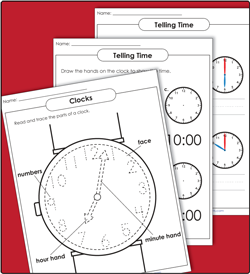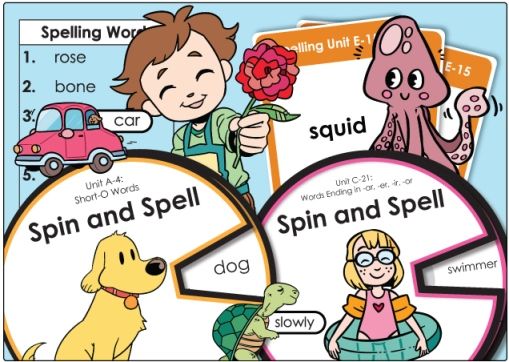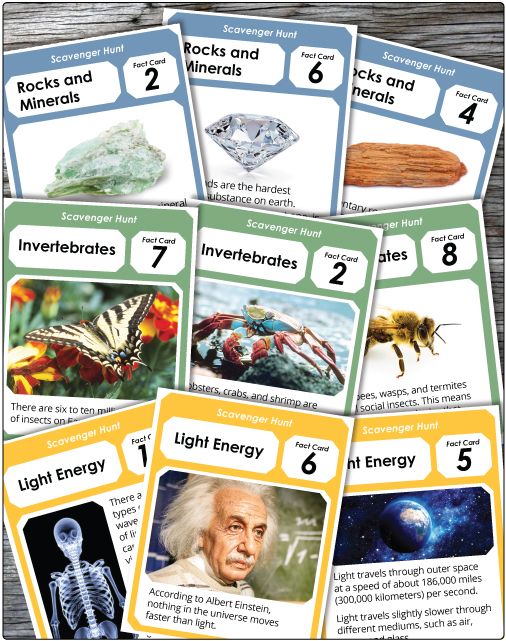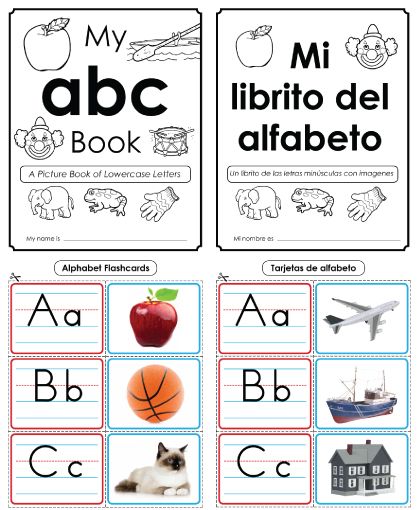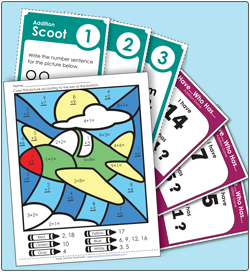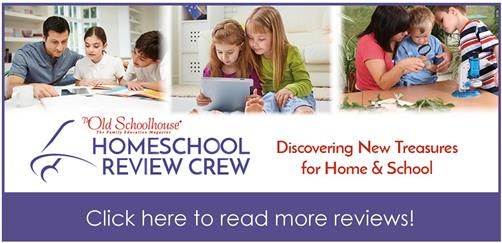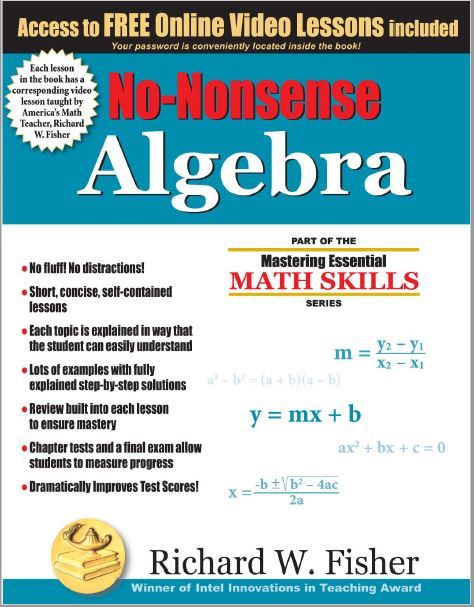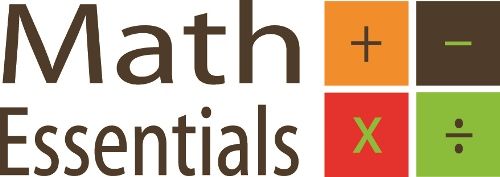Reviews
June 06, 2018
Straightforward Pre-Algebra Your Whole Family Can Use {A Review + Coupon Code}
When we were given the chance to review Understanding Pre-Algebra from The Critical Thinking Co.™, I was pleased, because we are always looking for a right-fit math resource for one of my children and are also seeking a pencil-and-paper one to balance online learning for another child. Understanding Pre-Algebra looked like it might fit the bill for both of them.
I was also excited, because The Critical Thinking Co.™ has a generous permission policy that allows the original owners of materials to copy them for use within one family or classroom. I just LOVE this copyright policy as it allows me to use a single resource with all three of my children in tandem or succession - a perfect policy for homeschool families with more than one child or for homeschool parents that teach co-op classes.
What is Understanding Pre-Algebra?
Understanding Pre-Algebra, which is available in print or as an e-book, is a hefty 442 page softcover work text aimed at students in grades 6-8, which teaches the math concepts and critical thinking skills necessary for future success in Algebra 1. It is standards-based and organizes concepts into a logical order that aims to solidify specific concepts as prerequisites to other ones, helping students grow in confidence and skill as they make their way through connected learning.Word problems within the book are taught using charts and tables, so students learn strategies for solving them instead of being asked to just figure things out on their own.
The book takes students, concept by concept, through understanding of:
- number families (natural, whole, integers, prime, etc.)
- working with integers
- working with rational numbers
- ration, proportion, and percent
- algebreic expression
- equations and solving word problams
- inequalities and applications
- understanding square roots and irrational numbers
- two dimensional geometry
- understanding volume and surface area
- graphing on the coordinate plane
- transformations and congruency
- understanding functions
- probability and statistics
Of course, if you have not been doing a lot with math lately, some of these terms might not be so familiar anymore, and, that's okay! The book has that covered through then inclusion of a handy glossary as well as highlighted boxes throughout the text.
It also includes a formula reference sheet and a table of square roots. Plus, of course, there are pages with the answers to all of the problems presented in the book. (These pages show JUST the answers, not the way the solutions were figured out.)
Pages are perforated, so students who need to see just a little at a time can easily remove the pages they are working on, or so parents can rip out the solution pages.
Each chapter has a review and there is an included final exam as well.
All this adds up to a single-book, straight-forward, clear resource for learning Pre-Algebra as a full year course. It also means that those who are using a different curriculum - online or in print - can easily use this book as a secondary source, quickly turning to pages that present ares students need more practice or a different explanation of.
The simple organization of the curriculum is definitely a plus.
How Did We Use It and What Did We Think?
My rising sixth grader was the child who wished to try Understanding Pre-Algebra as she had become enamored with an Algebra book her brother used before, but found it a little too difficult. So, she thought this Pre-Algebra book might be just right.
Even though Understanding Pre-Algebra is written in such a way that a student could use it independently, since my daughter has dyslexia, we opted to use the book together. So, we set a timer and dug in to Chapter One for 15 minutes with success.
By our third or fourth 15-minute session with the text, however, we both agreed that my daughter's foundational elementary learning of arithmetic had not fully prepared her for Understanding Pre-Algebra yet, so we decided to table our use of the book until a future time.
When I asked my daughter what she thought about the pages she did use, she said:
I like how much white space each page has. I also like how the things they want you to focus on are highlighted. The explanations were clear and there were not too few or too many problems. I think I might want to use it in the future.
I also asked my oldest son, a rising seventh grader, to try Understanding Pre-Algebra, because both my husband and I agree that, although my son would rather simply do math online and in his head, he needs to do some with paper-and-pencil. The main math curriculum he has been using online has become an "easy button" for us, but, we have noticed it is too easy in that it does not cause our son to think, strategize, process and remember math as well as we would like him to do so.
Thus, we asked my son to start using Understanding Pre-Algebra for 15 minutes at a time independently. He complied, but not happily, since he does not like workbooks for math.
When I asked my son for his thoughts on this book, he said:
I don't care for it, because it is a workbook. I prefer online learning, which is better for me. This workbook seems pretty much the same as any other math workbook. It teaches you, then you have to do problems, and there is writing. I don't like writing. Typing is faster, so maybe I would like this if it was an online workbook that auto-corrected one problem before giving you another.
If I had to say three positive things about it, I would say:
- I only have to do it for 15 minutes at a time.
- You can copy it so your sister and brother can use it, too.
- It made me aware of things I did not know.
I know Mom is going to make me use this sometimes still and that she is going to do it with me.
Yes, my boy is pretty blunt and, yes, he is correct. We will continue to use this book in conjunction with other math resources and I will begin using it alongside him for a while.
The reason we will use the book despite my son's aversion to workbooks is that my husband and I are not seeing enough fruit from my son's past year of mostly online math learning and both like the clear, incremental way Understanding Pre-Algebra presents math.
The reason I will use the workbook alongside my son as we move forward instead of asking him to continue to work on it on his own is because it has become apparent to me that my son lacks the study skills and stamina necessary to work through more difficult math on paper, and, so would do better with me giving him some immediate feedback and reminders to focus until his math mind and ability to work independently develop further.
So, overall, I am happy we have had the opportunity to review
Understanding Pre-Algebra.
Though it proved above my daughter's level, we both saw how it could work for her in the future when her foundational skills are stronger, and though my son did not favor it, my husband and I agree that the curriculum is sound.
We plan to continue to use this resource as a supplementary resource for my son to work his math skills and his stamina with pencil work. We also believe this book will be an ideal fit for my youngest child - who is only in second grade right now - but already shows signs of being more of a "workbook kid" that would appreciate the straightforward approach of Understanding Pre-Algebra.
The fact that The Critical Thinking Co.™ allows a family to copy the resource for every child's use, then, is great for us!
BONUS - A FREE OFFER!
Would you like FREE Critical Thinking Puzzles? Sign up now at
https://www.criticalthinking.com/toscrew to get Critical Thinking Puzzles delivered weekly to your inbox weekly. Choose PreK – Grade 8. (A $75 value.)
FREE SHIPPING AND COUPON!
Get FREE SHIPPING + 15% off any size order at The Critical Thinking Co.™ using the coupon code: TOSCREW18, which expires 12/31/2018.Learn More
One-hundred Review Crew families checked out learning materials from the The Critical Thinking Co.™. Click through to access all of our reviews about:
- Understanding Pre-Algebra
- Critical Thinking Detective Book 1
- Something Fishy at Lake Iwannafisha
- Critical Thinking Detective: Vocabulary
- Dare to Compare Level 1
- Vocabulary Riddles Book 1
You can connect with The Critical Thinking Co.™ on:


















